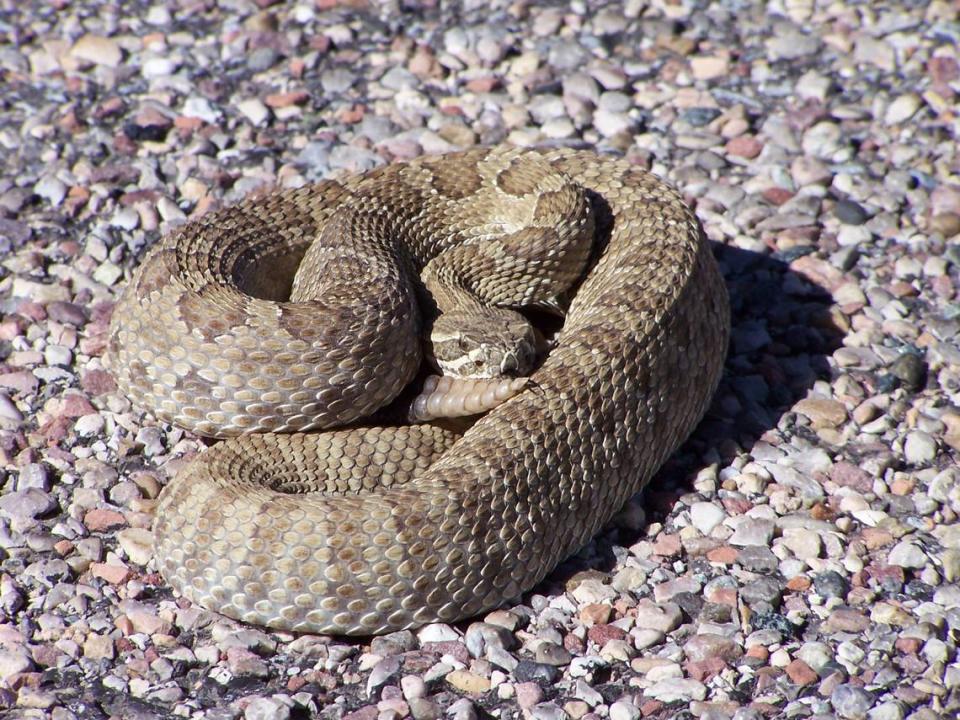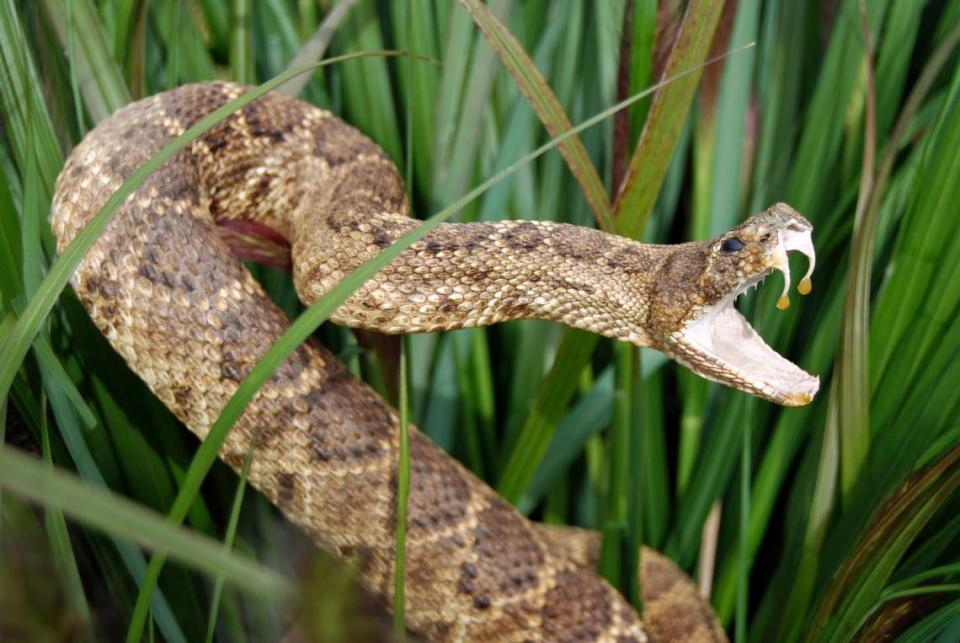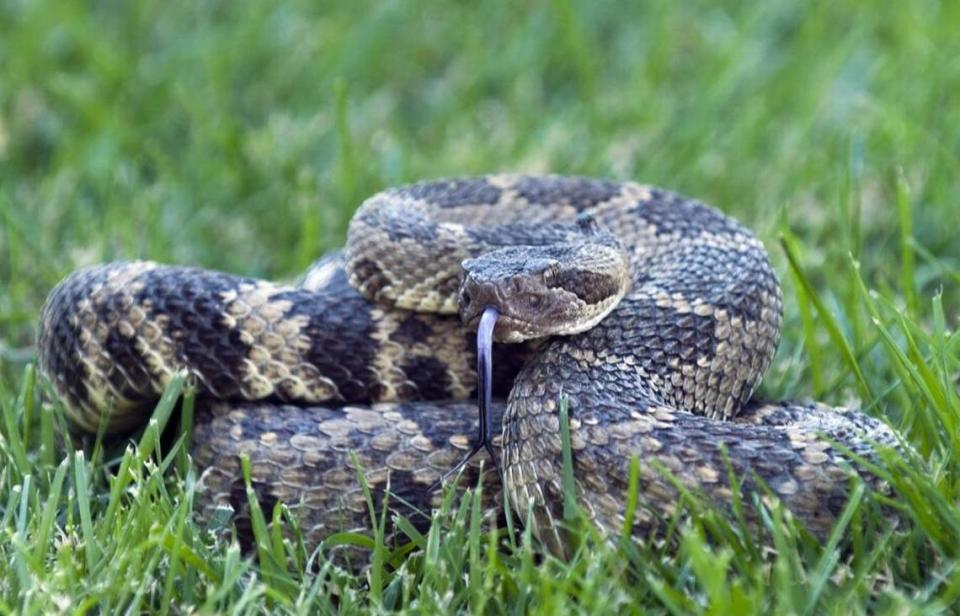Rattlesnakes are active in California as weather warms. Here’s how to avoid getting bitten
As the weather gets warmer, humans aren’t the only ones eager to bask in the sunshine.
Rattlesnakes thrive in the spring and summer.
Snakes are most active from April to October, according to the U.S. Forest Service, which only increases the likelihood you’ll run into one while out on a walk, hike or camping trip.
Here are some tips to help you stay prepared during your outdoor adventures:

How to identify rattlesnakes
Seven different species of rattlesnake can be found across California.
The most common is the western rattlesnake, which can be found from sea level to elevations of 7,000 feet, according to the California Department of Fish and Wildlife.
Rattlesnakes can be recognized by the distinct sound their rattles make.
The snakes can, however, lose their rattles or simply decide not to use them.
In that case, you can identify them by their gray or light brown exteriors and triangular-shaped heads. They usually range between 2 feet and 4 feet in length and can easily camouflage themselves to match their surroundings.
The reptiles typically hang out under rocks, logs and woodpiles, according to the National Park Service.
Once a snake is ready to raise its body temperature, it will move into sight.
A rattlesnake can strike as far as two thirds of its body length, according to Sonoma County Regional Parks.
If you encounter a snake on a trail, you should stay at least 10 steps away from it, or as far as possible.

How common are rattlesnake bites?
Unless provoked, rattlesnakes usually avoid humans, according to the Forest Service.
If a snake does attack, they usually go for the hands, feet and ankles.
In the United States, roughly 1,000 people get bitten by rattlesnakes each year.
How to avoid snakes
Below are some tips to help avoid rattlers and other snakes while outdoors, according to the Forest Service:
Prepare for your hike
Wear over-the ankle boots, thick socks and loose-fitting long pants.
Don’t go barefoot or wear sandals
While on your trip
Stick to well used trails when exploring
Avoid walking through tall grass and weeds
Watch where you step
Avoid wandering in the dark
When going over fallen trees or large rocks, inspect the surrounding areas to make sure there are no snakes
Be cautious when climbing rocks or gathering firewood
Shake out sleeping bags before using them and inspect logs before sitting down
Other tips
Avoid grabbing sticks and branches while swimming in lakes and rivers, snakes can swim and can sometimes pass for sticks
Avoid approaching any snake. Even a freshly killed snake can still inject venom

What should I do if I get bitten by a rattler?
Not all rattlesnake bites are deadly.
A recorded 25% of rattlesnake bites between April and October are “dry” bites, which means no venom was injected into the person, according to the Forest Service.
If you’re bitten by a snake, here’s what to do:
Stay calm to slow the spread of the venom
Gently wash the area with soap and water
Apply a cold, wet cloth over bite
Remove any watches or rings that may constrict swelling
Immobilize the affected area
Try to remember the color and shape of the snake for later treatment. Photograph it if possible.
Dial 911 and seek medical attention as soon as possible
If you can’t get to the hospital right away, lay or sit down with the bite below the level of your heart. Then wash the wound with warm, soapy water and cover it with clean, dry material.
Here’s what not to do, according to the U.S. Centers for Disease Control and Prevention:
Do not pick up the snake or try to trap it
Do not apply a tourniquet (material used to prevent blood flow)
Do not slash the wound with a knife
Do not suck out the venom
Do not apply ice or soak the wound in water
Do not drink alcohol
Do not drink caffeine
What do you want to know about life in Sacramento? Ask our service journalism team your top-of-mind questions in the module below or email servicejournalists@sacbee.com.

